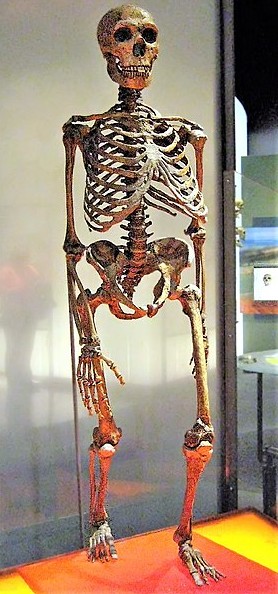The view that the meat-loving Neanderthals consumed vegetables has been revealed by the investigation of the oldest reported traces of human feces. Some 50,000 years old human fecal fossils propose that the Neanderthals had a balanced diet, including plenty of vegetables and meat.
Around 30,000 years ago, Neanderthals, ancient human cousins, disappeared from Europe. Around that period, it was the arrival of modern humans. The bones of hunted reindeer and mammoth, evidently found at their campsites, is the reason why the Neanderthals were seen as strict carnivores.
The reported Neanderthal fecal samples on Wednesday, in the journal of PLOS ONE, suggest that they also consumed plenty of nuts, berries, and several other vegetables. While investigating the fire pits from cooked meat for the chemical traces of fat, the researchers unexpectedly found some fecal fossils, in Southern Spain. The fossil feces were found in the top hearth layer.
The paleo archaeologist Ainara Sistiaga, who led the excavation, with the Massachusetts Institute of Technology, told The Salt that the contents of the poop are what that surprised her team more. When they analyzed poop (known as El Salt) under the microscope, they found a cholesterol-like compound that comes from plants, called phytosterols.
The presence of plenty of animal-derived cholesterol in the feces confirms that the Neanderthals were also chowing down on meat. This investigation opened the new window into the Neanderthal diet since it was the first time the researchers get to know what they consumed and digested.
Significant Plant Consumption
Gas chromatography is the technique used by the team of researchers for separating the chemicals bound up in the ancient samples. To find out molecules and their quantities, this was combined with mass spectrometry.
From the soil taken from the same area in thin sections, the researchers alsorecognizedsmall coprolites- entire pieces of fossilized poo. Coprolites showed human feces characteristics, including a high phosphate content and physical structure.
Based on the layer in which the fecal fossil was found, about 50,000 years old, is the ancient identified human feces. The fossilized feces found in ancient Greek latrines and Egyptian mummies; the samples of Neanderthal can easily pre-date them.
The chemical composition of minuscule traces of feces revealed a crucial finding. These samples were influenced by the products of digested meat make-up. But one, in particular, showed considerable amounts of plant-derived esters as well. Although the meat was the predominant food source of Neanderthals, Ms. Sistiaga explained that the composition of her samplesuggested a consequential consumption of plants.
For years, scientists believed that our early ancestors, Neanderthal, were carnivores. According to this assumption, they saw plants as a tool but certainly not as a food. Until a couple of years ago, there were little hard proves that the Neanderthals were omnivores.
While studying the teeth of Neanderthal, the researchers found fossilized bits of plants. But according to Sistiaga, this did not confirm that Neanderthal had a taste for plants because they may have used their mouth for holding plants and used it as a tool. She further added that the plant material could have come from eaten animals’ gut. The scientists who were previously tackling the debate on the omnivorous Neanderthal side told that the recent findings help in making up the case. An archaeological chemist at the University of York, Stephen Buckley, who found the plant bits in the teeth of Neanderthals previously said that the recent research shows that from mouth to the endpoint, they have plant material consistently.
The paleoanthropologist at The George Washington University, Alison Brooks, echoed the views of Stephen Buckley. She told The Salt that the recent work of Sistiaga puts another nail in the coffin of a Neanderthal carnivore. However, Brooks raised some questions about the methods used by the team too.
Brooks further added that there is a possibility that the poop came from another omnivorous animal, like a Macaque monkey, bear, or wolf. In response to this, Sistiaga included that mammal carnivores like lions and wolves have a fast digestive system that prevents them from converting cholesterol into coprostanol.
Moreover, she further added that gorillas and chimps have cholesterol-to-coprostanol closer to that of herbivores. So, they can be ruled out. Sistiaga agrees that the Neanderthals probably consumed what was available to them in different climates, situations, and seasons.
So, the next time a paleo-pushing diet fanatic tells you to swear off certain plant foods – tell them, poop samples prove that cavemen love fiber too.

